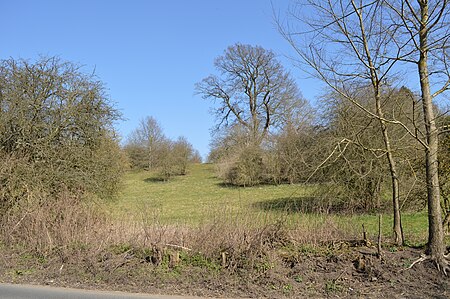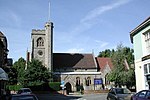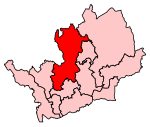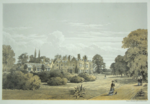Danesbury Park
Local Nature Reserves in HertfordshireWelwyn

Danesbury Park is a 24.5-hectare (61-acre) public park and Local Nature Reserve in Welwyn in Hertfordshire. It is owned and managed by Welwyn Hatfield Borough Council.The site was formerly the park of Danesbury House, and it still has some large mature trees which are important to wildlife, especially bats, owls, insects and fungi. The park also has grassland with many varieties of flowering plants, and which is managed by rare-breed cattle, and occasionally by cutting.There is access from a number of roads including Codicote Road. Another Local Nature Reserve, Singlers Marsh is on the other side of Codicote Road.
Excerpt from the Wikipedia article Danesbury Park (License: CC BY-SA 3.0, Authors, Images).Danesbury Park
Carleton Rise, Welwyn Hatfield
Geographical coordinates (GPS) Address Nearby Places Show on map
Geographical coordinates (GPS)
| Latitude | Longitude |
|---|---|
| N 51.8372 ° | E -0.2176 ° |
Address
Carleton Rise
Carleton Rise
AL6 9RQ Welwyn Hatfield
England, United Kingdom
Open on Google Maps





